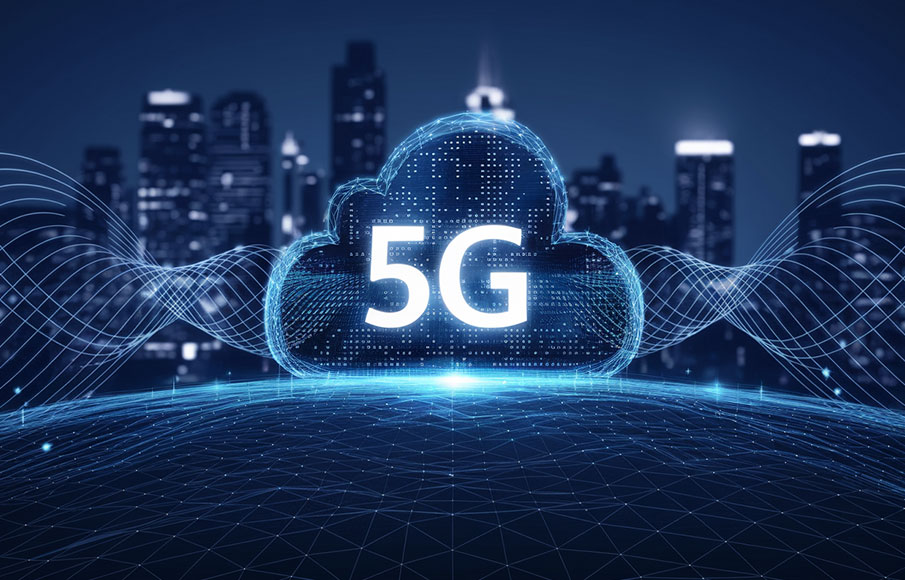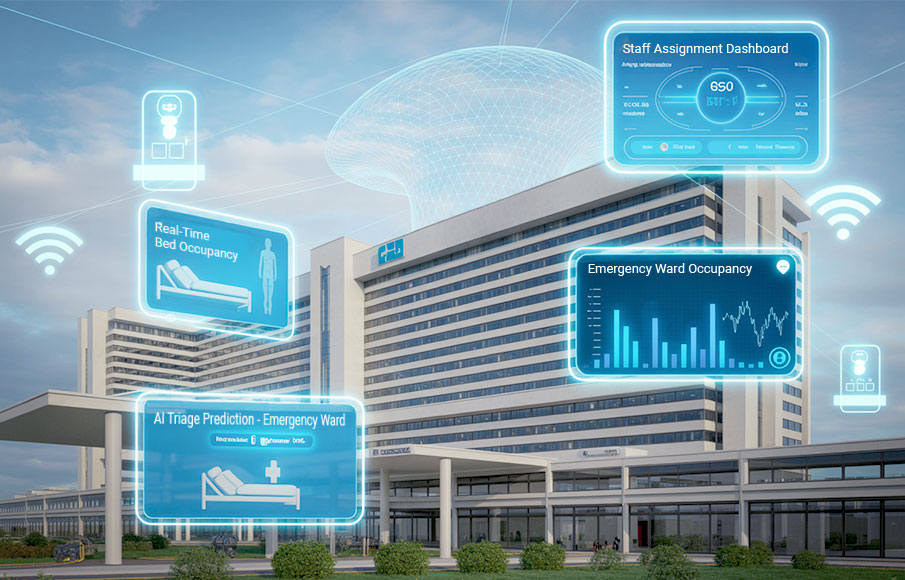5G & Edge Cloud: Why Businesses Use This Combination
- 21 January 2025

The exponential growth of internet-connected devices and data-intensive applications demands a new approach to enterprise networking infrastructure. Edge computing, complemented by the low latency and high bandwidth of 5G, is poised to overcome the challenges of traditional data centers and reshape the future of IT operations for global enterprise organizations.
The demand for edge computing is expected to grow from US$53.6 billion in 2023 to US$111.3 billion in 2028, and 5G adoption is becoming ubiquitous, with an expected 8 billion subscriptions worldwide by 2028.
Together, this symbiotic relationship improves network efficiency, enhances security, and unlocks new product and service opportunities for businesses ready to capitalize on these emerging technologies to maximize the potential of 5G and edge cloud.
What is Edge Cloud?

Edge cloud computing is a distributed computing framework that brings computing and storage resources closer to where data is generated and consumed. Rather than transmitting data to a central data center, Edge cloud computing goes one step further and leverages cloud architecture to process and store data nearer to the source for improved efficiency and response times.
Edge cloud is complemented by 5G’s higher data transfer speeds, high reliability, and lower latency, paving the way for a new generation of products and experiences. The benefits of edge cloud include:
- Processing in proximity to users and devices: Processing data on the network edge and closer to the source minimizes latency and improves efficiency.
- Edge cloud’s distributed architecture: Multiple edge nodes work together to form a distributed network, making it possible for data collected from far away to be processed at the nearest site without having to be transmitted to the cloud or a centralised data centre. This also enables enhanced availability for your infrastructure, allowing your different edge cloud locations to act as a backup for redundancy.
- Local data storage and processing: Edge cloud enables data to be processed and stored locally for data sovereignty. Critical information can be encrypted and sent to a central data center as needed.
- Scalability and flexibility: Edge cloud is scalable so organisations can increase compute resources as needed without having to invest in additional hardware.
How Edge Cloud Complements 5G Deployment
Edge cloud is the key to realizing the full potential of 5G by extending its reach and enhancing its capabilities. 5G can connect a massive number of devices, but efficiently processing and making sense of the data from these devices requires edge cloud computing.
Here’s how an edge cloud solution can complement 5G deployment:
| Lowers CAPEX |
|
| Improved Performance |
|
| Higher Availability |
|
| Better Security & Privacy |
|
Examples of Edge Cloud in Action

From infrastructure to artificial intelligence, 5G and edge computing are rapidly transforming how industries store, process, and work with data. Here are some notable enterprise use cases:
1. Autonomous Driving
BMW tested and developed 5G-powered autonomous driving technologies with Motius in the 5G Carmen EU Project X BMW. They deployed edge cloud infrastructure along test tracks and highways for real-time traffic information processing, collaborative driving, and remote operation of autonomous vehicles. With autonomous cars generating up to 10 to 20TB of data daily, 5G provides the connectivity and speed necessary to handle this massive data flow in real time. This research is fueling further investment in autonomous driving, paving the way for safer, more efficient self-driving vehicles and broader adoption of the technology.
2. Smart Manufacturing
Worcester Bosch, a leading manufacturer of domestic boilers, has launched the UK’s first 5G factory. Real-time machine sensors to identify and address production issues before they occur, leading to preventative maintenance and increased factory output by as much as 2%. Additionally, the installation of collision detection sensors significantly improved safety for employees. With the private 5G network and mobile edge computing infrastructure, AI and machine learning can be rapidly deployed at the smart factory without disrupting the production line or supply chain.
3. AR/VR
In 2022, Verizon partnered with Meta to develop Metaverse capabilities using 5G and Multi-Access Edge Computing (MEC) infrastructure. 5G and edge computing form the foundation for complex and data-intensive applications in the Metaverse. Areas of application in AR/VR include remote expertise, employee training, and simulation. The partnership hints at new potential revenue streams with new services and mixed reality applications for end users.
Explore SPTel’s Enterprise Edge Cloud for 5G Deployment

The convergence of 5G and edge cloud computing opens doors to new possibilities across various industries. Today’s edge cloud computing solutions are constantly evolving beyond devices and networking—but is your business ready for the digital transformation in a hyper-connected world?
Drive innovation and accelerate growth by leveraging SPTel’s pervasive and secure edge cloud locations to deploy new, transformative applications and services swiftly. Gain strategic business value from reduced operating costs and enhanced application performance—strategically located across four key zones and multiple interconnected hubs in Singapore.
Learn more about SPTel’s managed edge cloud today—a solution that simplifies 5G adoption across industries.












